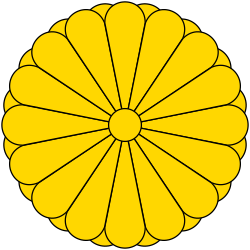| |||||||||||||||||||||||||||||||||||||||||||||||||||||||||||||||||||||||||||
All 491 seats in the House of Representatives 246 seats needed for a majority | |||||||||||||||||||||||||||||||||||||||||||||||||||||||||||||||||||||||||||
|---|---|---|---|---|---|---|---|---|---|---|---|---|---|---|---|---|---|---|---|---|---|---|---|---|---|---|---|---|---|---|---|---|---|---|---|---|---|---|---|---|---|---|---|---|---|---|---|---|---|---|---|---|---|---|---|---|---|---|---|---|---|---|---|---|---|---|---|---|---|---|---|---|---|---|---|
| Turnout | 71.76% ( | ||||||||||||||||||||||||||||||||||||||||||||||||||||||||||||||||||||||||||
| |||||||||||||||||||||||||||||||||||||||||||||||||||||||||||||||||||||||||||
| |||||||||||||||||||||||||||||||||||||||||||||||||||||||||||||||||||||||||||
| This article is part of a series on |
 |
|---|
General elections were held in Japan on 10 December 1972. The result was a victory for the Liberal Democratic Party, which won 271 of the 491 seats. [1] Voter turnout was 71.76%.
Contents
Little changed in the aftermath of the election; the LDP saw a slight decrease in seat numbers (debatably due to it fielding more candidates than ever before as a result of regained confidence in 1969), [2] and its vote share remained below 50% (even with the addition of conservative-aligned independents). The Japan Socialist Party won over 100 seats following its disastrous results in the 1969 Japanese general election, although infighting continued within the party over choosing cooperation with Kōmeitō or the Japanese Communist Party, coined "Civil Service or Joint Struggle". Fears remained that it would be overtaken by the resurgence of the JCP.
The Japanese Communist Party was arguably the biggest winner of the election. Its seat count nearly tripled in relation to the 1969 election, and in the span of two elections, it had gone from 5 to 38 seats. This meant it beat its post-war peak of 35 representatives in 1949. The other two opposition parties, the DSP and Kōmeitō, suffered losses despite cooperation with each other. Kōmeitō was going through a series of scandals around its censorship of press critical to it (aptly named the Press Publication Obstruction cases ) which severely damaged its public image, and gave favor to the JCP, with image of the Soka Gakkai as a cult beginning to emerge. The DSP also lost 12 seats.













